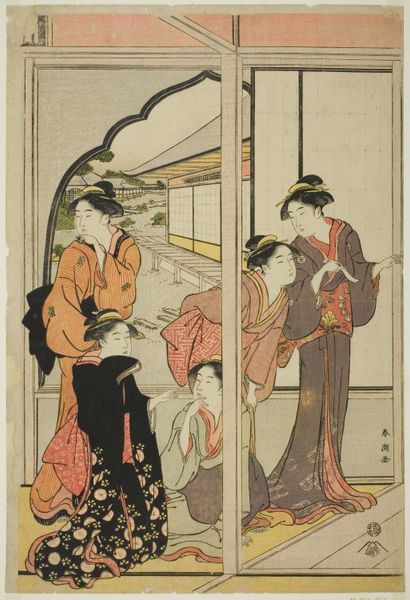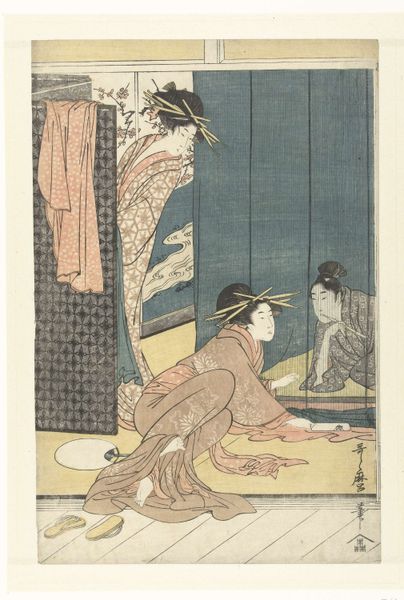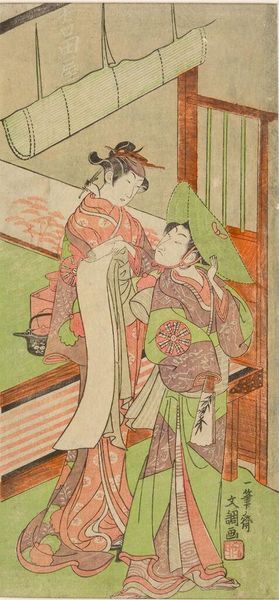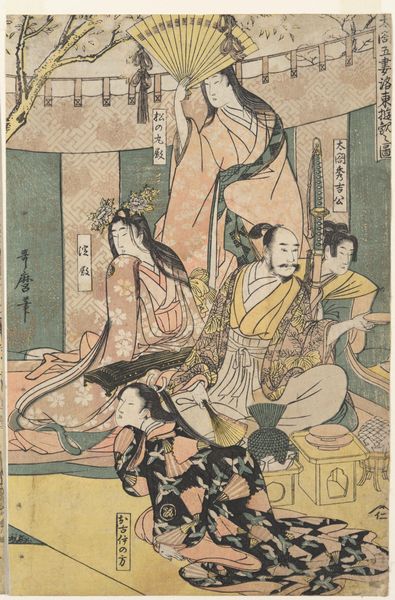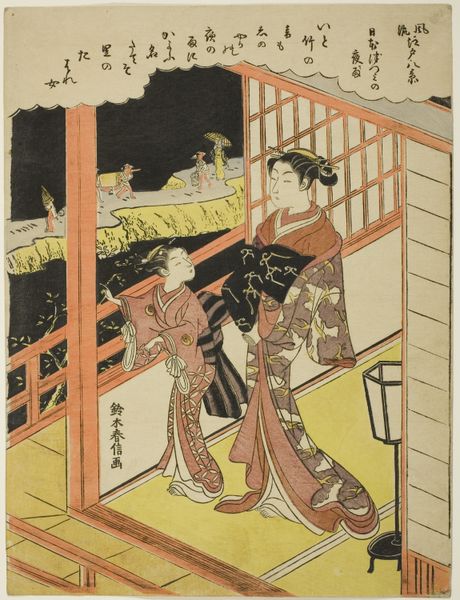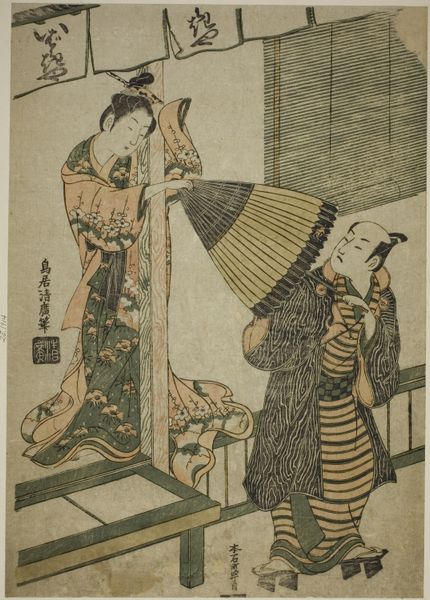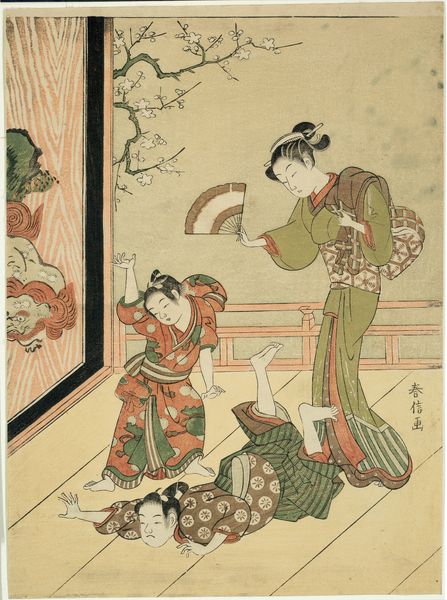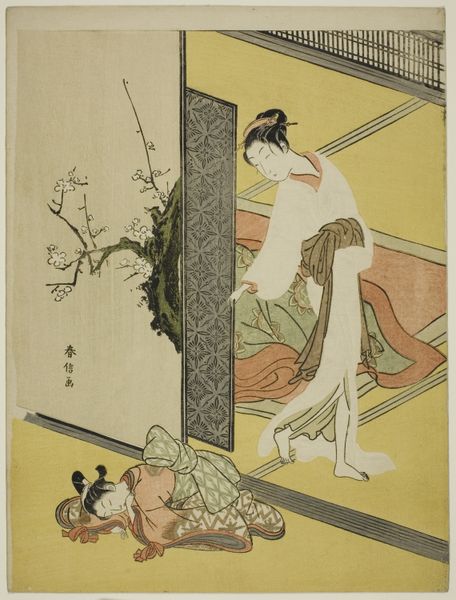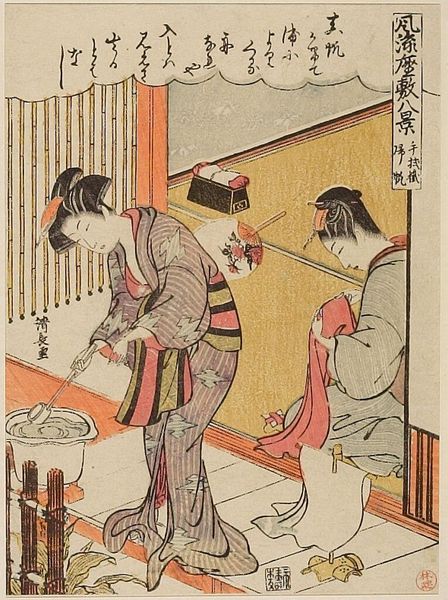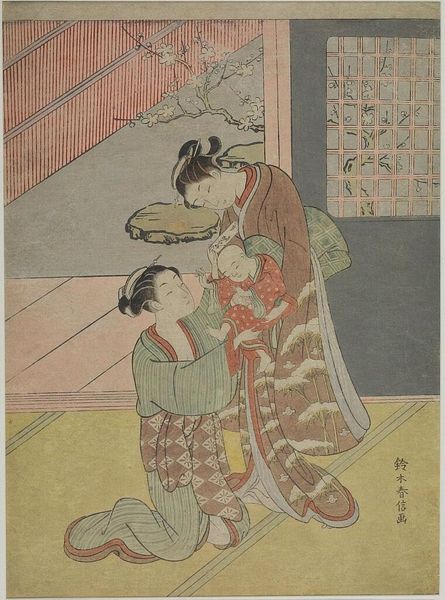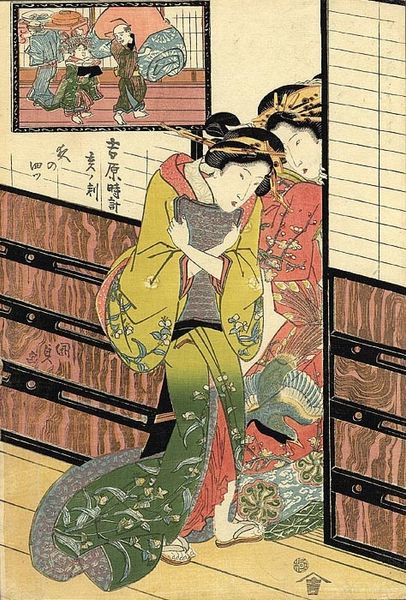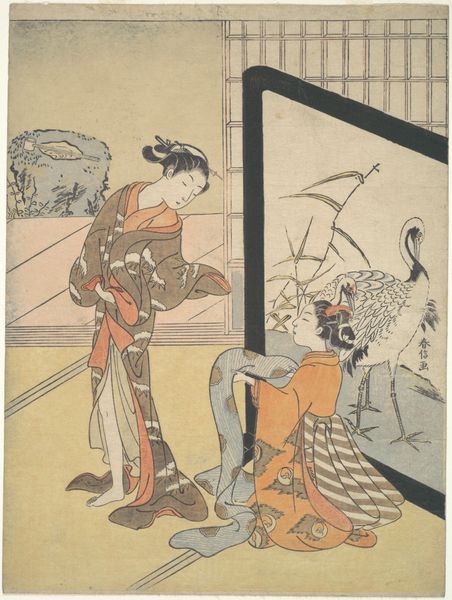
painting, print, woodblock-print
#
portrait
#
painting
# print
#
asian-art
#
ukiyo-e
#
figuration
#
woodblock-print
#
genre-painting
Copyright: Public domain
Curator: So, here we have "A Woman Watches Two Children", a lovely woodblock print by Kitagawa Utamaro. What strikes you first about it? Editor: The quietness, despite the game. It feels like a held breath, doesn’t it? A world observed rather than actively lived. The geometry's interesting, too, how the lines segment the composition and our perspective. Curator: Segment is a perfect word. You have the game of blind man's bluff happening with one child blindfolded. There is another child gesturing as if to sneak away, all watched by the adult who's framed in what looks like a shoji screen. This being a genre painting and ukiyo-e print suggests a scene of everyday life, yet that frame—that compositional divide—feels loaded. Editor: Absolutely. These domestic scenes were consumed, weren't they? Mass produced, even. But what did it mean for women, then and now, to be viewed like this? Part of a tradition, certainly, but also captured and mediated for a predominantly male gaze. I see echoes of geisha portraits and the commodification of femininity in the era. Curator: That's a strong reading! I was thinking about it in terms of maternal surveillance. Is the adult really "watching", or controlling, or even removed from the carefree energy of childhood by the screen between them. The stillness gives the moment such density, a silent intensity! Editor: Well, I can't deny the technique—the sensitive lines in the robes and hair, and the expressive hand gestures of the children—Utamaro captured the nuances of interpersonal dynamics here! But also, let’s acknowledge the class dynamics that the print aestheticized, no? The labor and leisure of the Edo period became aesthetic property through art making. Curator: It really makes you question how deeply intertwined visual culture is within a specific social environment! I find that reflection deeply humbling. Editor: Exactly! This woodblock becomes not only a window into a past world, but a mirror reflecting contemporary dilemmas. I can't help thinking of the continued relevance of identity, representation, and the market even centuries later.
Comments
No comments
Be the first to comment and join the conversation on the ultimate creative platform.
